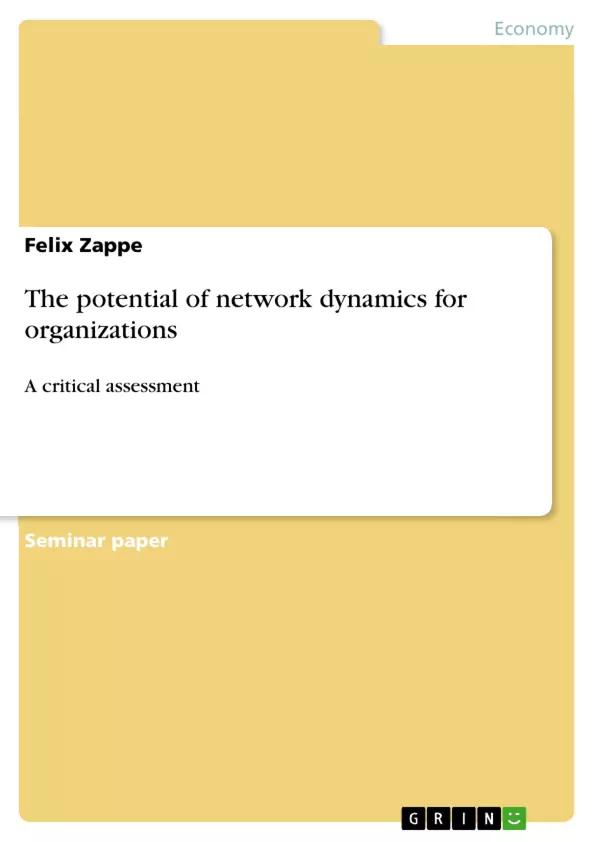The growing importance of networks can be seen in our everyday life. No day passes by without utilizing networks such as Facebook, LinkedIn, YouTube or even the information network Google. This network invasion shows the importance for the understanding of net-work dynamics and the importance for business to react accordingly to these new expecta-tions and possibilities these technologies open up.
This work wants to introduce to basic principles of networking and then shortly assesses technologies possibilities in emerging frameworks.
Inhaltsverzeichnis (Table of Contents)
- INTRODUCTION
- BASIC PRINCIPLES OF NETWORK ECONOMICS
- RELATIONSHIPS
- NETWORK BASED BUSINESSES
- NETWORK DYNAMICS
- THE ROLE OF NEW DIGITAL TECHNOLOGY
- THE DIMENSIONS OF NETWORK DYNAMICS
- THE NETWORK PARADOX
- CONCLUSION
Zielsetzung und Themenschwerpunkte (Objectives and Key Themes)
This paper delves into the significance of network dynamics for organizations, examining how businesses can leverage these principles to enhance their operations and adapt to the evolving technological landscape. The paper specifically focuses on the emerging role of new digital technologies in shaping network dynamics.
- Understanding the fundamental principles of network economics, including relationships, network-based business models, and network dynamics.
- Exploring the impact of new digital technologies on network dynamics and the emergence of new opportunities and challenges.
- Analyzing the "network paradox" and its implications for organizations.
- Assessing the potential of network dynamics for businesses and identifying key strategies for successful implementation.
- Highlighting the importance of adapting to the evolving expectations and possibilities presented by networked technologies.
Zusammenfassung der Kapitel (Chapter Summaries)
- Introduction: The paper introduces the growing importance of networks in contemporary society and emphasizes the need for businesses to understand and adapt to network dynamics. It outlines the purpose of the work, which is to explore the principles of networking and assess the potential of technology within emerging frameworks.
- Basic Principles of Network Economics: This section establishes the foundations of network economics by focusing on the concept of relationships. It delves into the idea of networks as constructs of nodes and threads, highlighting how relationships within networks influence business interactions and outcomes. It then examines the business model of network-based businesses, emphasizing the value created through the transport of goods, information, or people.
- The Role of New Digital Technology: This chapter focuses on the impact of new digital technologies on network dynamics. It explores the dimensions of network dynamics, such as network structure, network evolution, and the role of technology in harnessing these dynamics. The section also analyzes the "network paradox," a concept that explores the challenges and opportunities presented by increased interconnectedness.
Schlüsselwörter (Keywords)
Key terms and concepts explored in this paper include network economics, network dynamics, relationships, network-based businesses, new digital technologies, network paradox, and organizational adaptation.
- Citation du texte
- Felix Zappe (Auteur), 2017, The potential of network dynamics for organizations, Munich, GRIN Verlag, https://www.grin.com/document/373659



